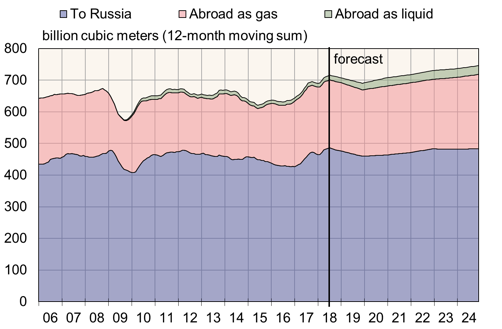BOFIT Weekly Review 38/2018
Russia’s fourth large natural gas liquefaction unit started production
In August, the first cargoes were off-loaded from the second unit (liquefied natural gas (LNG) train in professional terms) of the plant in the Yamal peninsula on the shores of the Arctic Sea. The third and last large unit is to be completed next year. Two more units are located on the Sakhalin Island in the Pacific Ocean. Each of these five large units is capable of condensing annually about 7 billion m³ of natural gas into about 5 million metric tons (the capacity of about 70 vessels) of LNG. These units account for almost all of Russia’s production. Smaller facilities in the Baltic region produce much smaller amounts used e.g. as ship fuel.
In liquid form, Russian natural gas can be delivered beyond the reach of pipelines. Most of the LNG produced so far has been delivered by sea to Asia. After the completion of the plant in the Yamal Peninsula, nearly 15 % of Russia’s natural gas exports may be delivered in liquid form. Russia’s share of global LNG production capacity will rise to over 5 %. Russia would still be far below the levels of Qatar or Australia.
New projects are under consideration, but none has reached the construction phase. They would be operational several years from now at the earliest. In addition to the expansion of the Pacific Ocean and Arctic Sea plants, there is a plan to build a large plant in the port of Ust-Luga at the Gulf of Finland. Instead of being close to a gas field, this plant would be fed through the pipeline grid. The route of Nord Stream 2 gas pipeline also happens to start near Ust-Luga.
Destinations of natural gas produced in Russia
Sources: Rosstat, Russian customs and economy ministry (forecast).